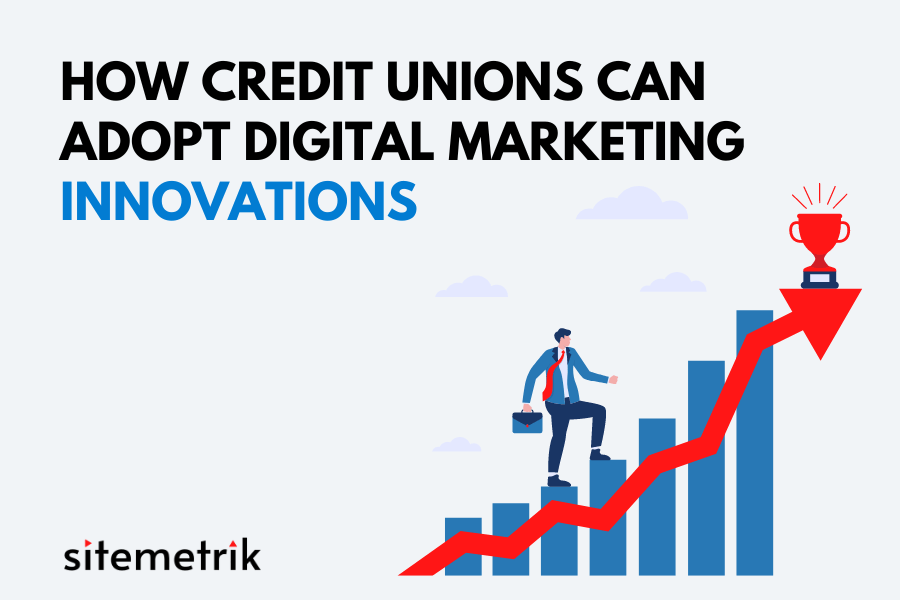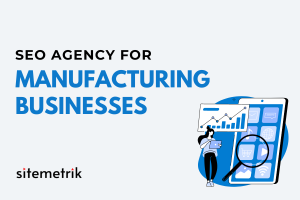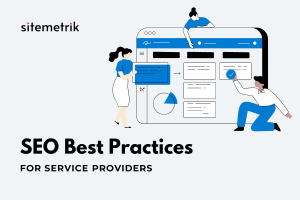Leveraging Fintech: How Credit Unions Can Adopt Digital Marketing Innovations
Definition of Fintech
Fintech, short for financial technology, refers to the innovative use of technology to provide financial services and solutions. It encompasses a wide range of digital advancements, such as mobile apps, online banking platforms, and artificial intelligence, that revolutionize the way financial institutions operate and engage with their customers. Through fintech, credit unions can enhance their digital banking experiences, streamline processes, and better serve their members. By embracing fintech, credit unions can not only revolutionize their operational processes and digital banking experiences but also capitalize on cutting-edge digital marketing innovations for credit unions, ensuring effective outreach and engagement with their members in the modern financial landscape.
Credit unions can offer a variety of financial products and services, from loan applications to personalized financial advice, through user-friendly and convenient digital channels. In an increasingly competitive market, credit unions need to embrace fintech and adapt their marketing strategies to stay relevant, attract potential customers, and provide exceptional customer experiences.

Source: https://techbootcamps.rice.edu/blog/the-beginners-guide-to-fintech/
Benefits of Digital Marketing for Credit Unions
Digital marketing offers numerous benefits for credit unions to enhance their online brand visibility, connect with existing members, and build new membership. By implementing effective digital marketing strategies, credit unions can expand their reach and establish a strong online presence.
One of the key benefits of digital marketing is improved online brand visibility. By utilizing tactics like Search Engine Optimization (SEO), credit unions can optimize their websites and online content to rank higher on search engine result pages. This enables potential members to find them easily when searching for financial products or services.
Additionally, digital marketing allows credit unions to connect with their existing members and build stronger relationships. Through email marketing campaigns, credit unions can keep their members informed about new products, services, and promotions. This helps to engage and retain members, ultimately leading to increased customer loyalty.
Another advantage of digital marketing for credit unions is the opportunity to build new membership. By implementing strategies like pay-per-click advertising (PPC) and content marketing, credit unions can reach out to prospective customers who may be interested in their financial products and services. This targeted approach ensures that marketing efforts are focused on attracting the right audience.
Target Audience for Credit Unions
Understanding and effectively reaching the target audience is crucial for credit unions in their digital marketing strategies. The target audience for credit unions typically includes individuals who are seeking financial products, such as loans or savings accounts, as well as those who value the personalized customer service and community-focused approach that credit unions offer.
Identifying Ideal Customer Profiles
Identifying ideal customer profiles is a crucial step for credit unions looking to maximize the effectiveness of their digital marketing strategies. By developing detailed customer personas, credit unions can better understand their target audience and tailor their marketing efforts accordingly.
When creating customer profiles, it is essential to consider various demographic, financial, and behavioral characteristics. Demographic characteristics such as age, gender, location, and income provide valuable insights into the target audience’s preferences and needs. Financial characteristics like debt levels, income stability, and credit scores help credit unions understand the financial products and services that are most relevant to their customers. Behavioral characteristics analyze consumer behaviors, such as preferred communication channels, banking habits, and the willingness to try new digital services.
By combining these characteristics, credit unions can create customer personas that represent different segments of their target audience. These personas act as fictional, but research-based profiles, providing valuable information about the customers’ motivations, pain points, and expectations. With this knowledge, credit unions can develop and execute marketing campaigns that resonate with their ideal customers.
Tailoring marketing strategies based on customer personas ensures that credit unions meet the specific needs and preferences of their target audience. From digital channels to content marketing and social media ads, a deep understanding of ideal customer profiles allows credit unions to connect with potential customers effectively. Ultimately, identifying ideal customer profiles empowers credit unions to deliver compelling marketing strategies that drive customer satisfaction, retention, and growth.
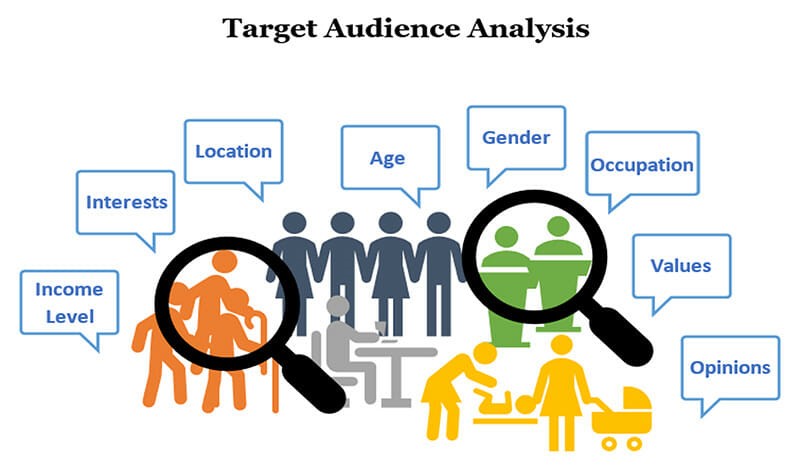
Creating a Unique Selling Proposition
Creating a unique selling proposition (USP) is crucial for credit unions to differentiate themselves from competitors and appeal to their target audience. To develop an effective USP, credit unions must identify what sets them apart in terms of their features, benefits, and customer experience.
- Firstly, credit unions should assess their competitors and understand what makes them unique in the financial industry. By analyzing their strengths and weaknesses, credit unions can determine the gaps in the market they can fill.
- Next, credit unions need to define their target audience and understand their needs and preferences. By conducting market research and gathering consumer insights, credit unions can tailor their offerings to align with their target audience’s financial goals and aspirations.
- In addition to understanding their target audience, credit unions should identify their unique features and benefits. This includes evaluating their financial products and services, such as competitive interest rates, flexible loan terms, and personalized customer service. Credit unions should also focus on their customer experience by highlighting user-friendly mobile apps, convenient online banking platforms, and fast approval for loans.
Establishing the Foundation
Establishing a strong foundation is crucial for credit unions looking to leverage digital marketing strategies to attract and engage prospective customers. This begins with conducting a thorough analysis of competitors within the financial industry, identifying gaps in the market that credit unions can fill.
Developing an Online Presence for Credit Unions through Digital Marketing Strategies
Creating an online presence is crucial for credit unions to effectively engage with their members and attract prospective customers. To achieve this, credit unions can follow these steps to utilize digital marketing strategies:
- Define your target audience: Understand the demographics, needs, and preferences of your target audience. This will help shape your digital marketing plan and create content that resonates with them.
- Develop valuable content: Creating blog posts, videos, infographics, and e-books can establish your credit union as a trusted source of financial information. Valuable content not only engages existing members but also attracts prospective customers by addressing their pain points and offering solutions.
- Leverage social media platforms: Utilize popular social media channels like Facebook, Twitter, LinkedIn, and Instagram to connect with members and reach a wider audience. Share relevant content, interact with followers, and create targeted social media ads to maximize engagement and attract new prospects.
- Utilize search engines and digital channels: Optimize your website for search engines to ensure it appears in relevant search results. Additionally, leverage digital channels such as email marketing campaigns, affiliate marketing, and search engine marketing to reach potential customers effectively.
Creating an online presence for credit unions through digital marketing strategies is essential for attracting and engaging with members and prospective customers. By developing valuable content, utilizing social media platforms, and leveraging digital channels, credit unions can establish a strong online presence, increasing their visibility in the digital space and growing their membership base.
Building a Mobile App for Customers
Building a mobile app for credit union customers can provide numerous benefits for digital marketing efforts. In today’s smartphone-driven world, having a mobile app allows credit unions to capture leads and engage with their target audience effectively.
- Firstly, a mobile app enables credit union customers to access financial products and services conveniently through their smartphones. This accessibility translates into increased engagement and a seamless customer experience. Customers can easily manage their accounts, view balances, transfer funds, and even apply for loans directly from their mobile devices.
- Secondly, optimizing content for mobile-friendly access is crucial in today’s digital landscape. By aligning websites, apps, and advertising within the borders of smartphones, credit unions can effectively reach their target audience and boost digital marketing sales. Mobile apps provide a personalized experience for customers, allowing for customized notifications, alerts, and offers that can enhance engagement and loyalty.
- Additionally, a mobile app enables credit unions to leverage digital marketing strategies such as push notifications, in-app messaging, and location-based marketing. These features allow credit unions to deliver targeted and timely content directly to their customers’ smartphones, increasing the likelihood of conversions and fostering a stronger relationship with the audience.
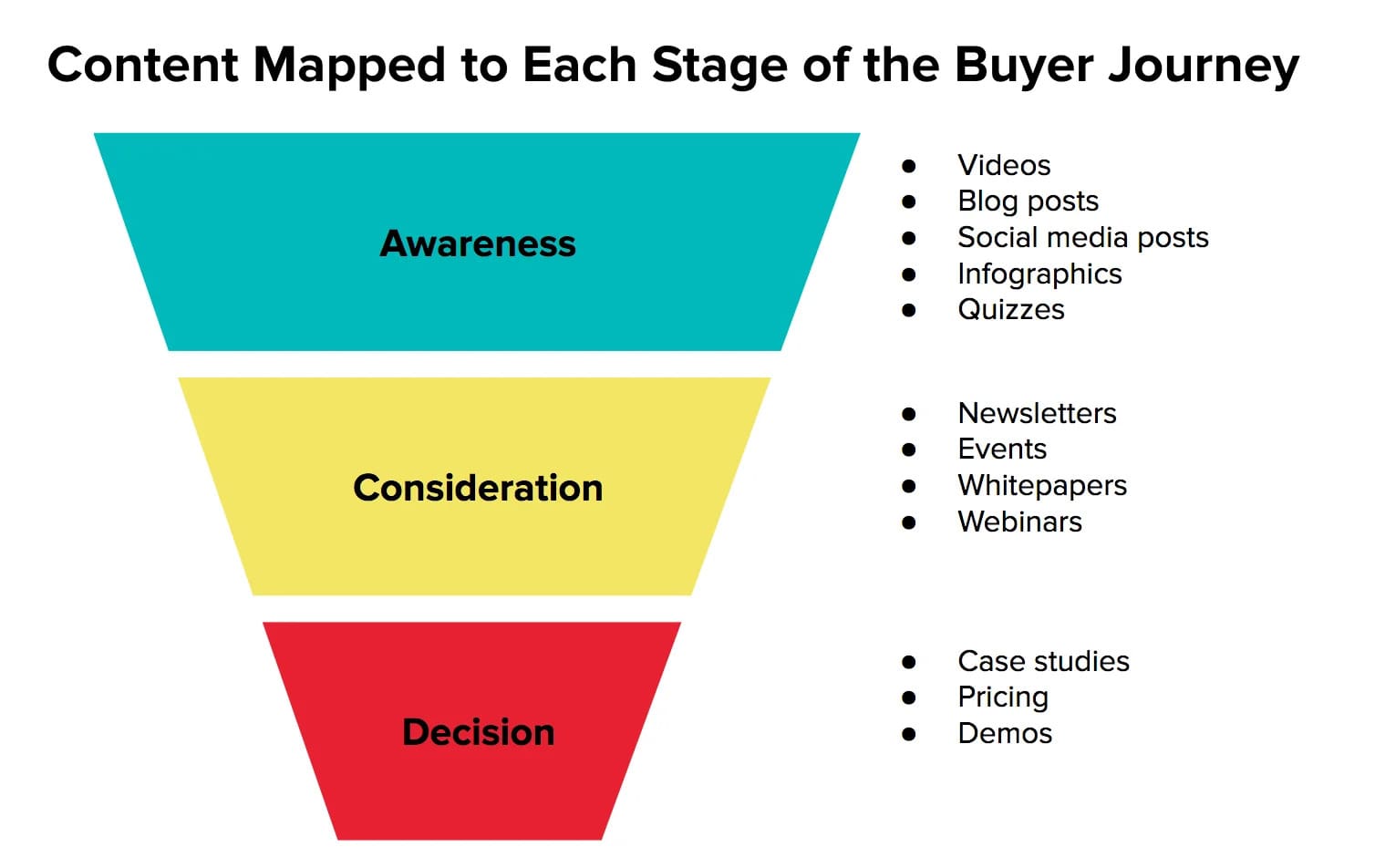
Exploring Artificial Intelligence Applications
Credit unions can greatly benefit from exploring the applications of artificial intelligence (AI) in their digital marketing strategies. AI tools offer various capabilities that can enhance customer experience, improve data analysis, and streamline operations.
One significant application of AI in digital marketing is data analysis. By leveraging AI-powered algorithms, credit unions can efficiently analyze massive amounts of customer data to gain valuable insights. These insights can then be used to develop more targeted and personalized marketing campaigns, resulting in higher engagement and conversion rates.
Furthermore, AI can help credit unions understand customer preferences and behavior. AI tools, such as machine learning algorithms, can analyze consumer data and provide valuable insights into their preferences, needs, and buying patterns. Armed with this knowledge, credit unions can tailor their marketing efforts to better meet the expectations and interests of their target audience.
Chatbots are another valuable AI tool for credit unions. These virtual assistants can provide real-time assistance to customers, answering their queries, providing account information, and even guiding them through the loan application process. Chatbots save time and resources by automating customer service interactions, and they are available 24/7, enhancing customer satisfaction and driving engagement.
The potential market size for chatbot marketing is significant. According to a survey conducted by Juniper Research, chatbots are projected to save businesses over $8 billion per year by 2022. Additionally, a study by Oracle found that 80% of businesses plan to use chatbots by 2020. Customers are becoming increasingly comfortable interacting with AI-powered chatbots, making it an effective and preferred channel for customer support and engagement.
Crafting a Successful Digital Marketing Plan for Credit Unions
Planning Campaigns and Messaging Strategies
When it comes to planning effective digital marketing campaigns and messaging strategies, credit unions need to take a strategic approach that considers their target audience, goals, and available resources.
First and foremost, credit unions should conduct thorough market research to identify their target audience and understand their needs, preferences, and behaviors. This information will guide the planning and execution of personalized and relevant marketing campaigns.
In the digital age, creativity and innovation play a crucial role in capturing the attention of potential customers. Credit unions must think outside the box and explore innovative digital marketing strategies to stand out in a crowded market. This could include utilizing technologies such as artificial intelligence and mobile apps to enhance the customer experience or leveraging content marketing to provide valuable information to their audience.
Additionally, strategic partnerships with fintech companies or other organizations can offer credit unions access to new technologies, expertise, and customer bases. By collaborating with these partners, credit unions can create unique and compelling marketing messages to attract and retain customers.
To ensure successful campaigns, credit unions can look to larger financial institutions for inspiration. Many big banks have implemented innovative strategies such as interactive social media ads, personalized loan application processes, and seamless digital banking experiences. By examining these successful campaigns, credit unions can gain insights and adapt them to fit their own marketing goals and resources.
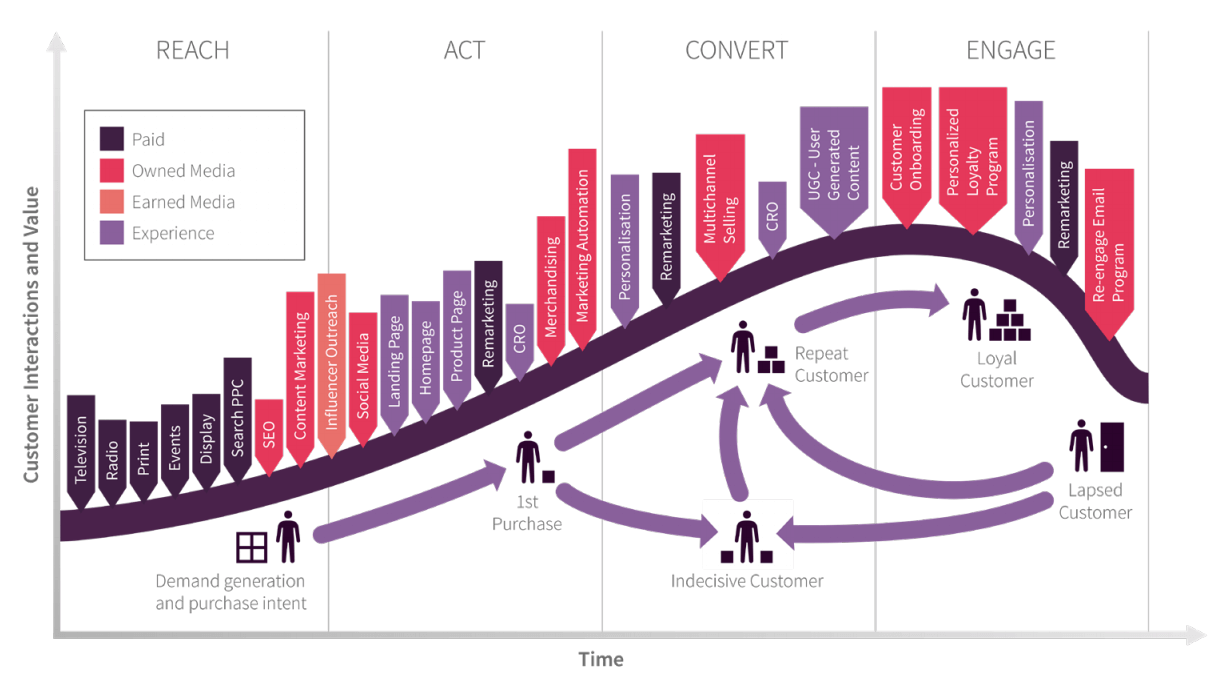
Content Marketing Efforts to Engage Prospective Customers
Content marketing plays a crucial role in engaging prospective customers for credit unions. According to statistics, 84% of marketers utilize content marketing strategies to attract and retain their audience.
One effective form of content marketing is creating How-to guides. These guides not only provide valuable information to potential customers but also drive traffic and lead generation. Prospective customers are actively seeking solutions to their financial needs and challenges, and delivering informative content can position credit unions as trusted advisors.
Creating and promoting informative content, such as blog posts and videos, is vital for establishing credibility and building trust. By consistently delivering valuable information, credit unions can demonstrate their expertise, increase financial stability, and attract customers who are looking for reliable financial guidance.
Another important factor in successful content marketing is having responsive landing pages. These pages provide a seamless user experience and encourage action by making it easy for visitors to access relevant information or take desired actions.
Utilizing Social Media Platforms to Reach Potential Customers
In the digital age, credit unions have a powerful tool at their disposal to connect with potential customers – social media platforms. By leveraging the reach and engagement levels offered by platforms like Facebook, Twitter, Instagram, and LinkedIn, credit unions can effectively target and engage with their target audience.
Social media marketing allows credit unions to stay connected with their members and improve member engagement. By regularly sharing informative and engaging content, credit unions can build stronger relationships with their members, leading to increased loyalty and satisfaction. These platforms also offer opportunities for two-way communication, enabling credit unions to listen to member feedback, address concerns, and provide personalized assistance.
To find inspiration for their digital marketing efforts, credit unions can look to successful campaigns executed by larger financial institutions. For example, Capital One’s “#ShareMyCheck” campaign encouraged customers to share how they used their stimulus checks, generating user-generated content and increasing brand awareness. Credit unions can adapt similar strategies by creating campaigns that encourage members to share their financial goals or success stories, creating a sense of community and fostering engagement.
Leveraging Search Engines and Other Digital Channels
In addition to social media platforms, credit unions can leverage search engines and other digital channels to enhance their digital marketing efforts. Search engines like Google and Bing are often the first stop for consumers looking for financial products and services. By implementing effective search engine optimization (SEO) strategies, credit unions can improve their organic visibility and drive targeted traffic to their websites.
SEO involves optimizing a website’s content, structure, and technical aspects to rank higher in search engine results pages (SERPs). By incorporating relevant keywords, creating high-quality content, and optimizing meta tags and headers, credit unions can increase their chances of appearing in front of their target audience when they search for financial information or services.
Apart from search engines, credit unions can also utilize other digital channels to reach potential customers. Social media platforms like Facebook, Twitter, and LinkedIn provide opportunities for targeted advertising and engaging with members through regular content sharing and two-way communication.
Email marketing campaigns can also be highly effective in nurturing leads and staying connected with existing members. Credit unions can send personalized emails offering relevant financial advice, promoting new products or services, or providing updates on their offerings.
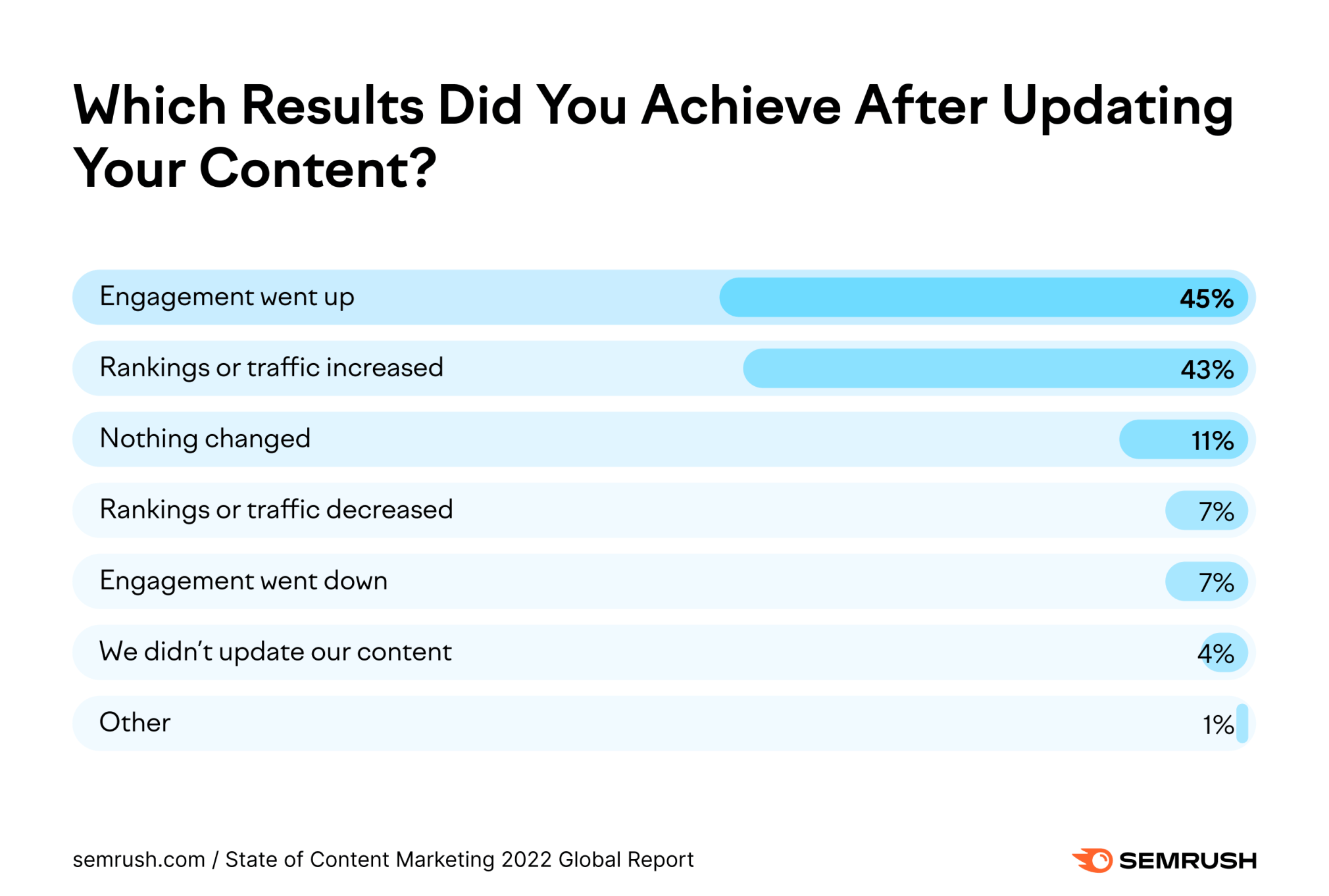
Source: https://www.semrush.com/blog/content-optimization-guide/
Introducing Digital Services or Technologies
In today’s rapidly evolving digital landscape, credit unions must embrace various digital services and technologies to stay competitive and provide exceptional member experiences. By adopting these modern tools, such as Webforms, eSign, and eTeller, credit unions can offer convenient and seamless services to their members.
Webforms enable credit unions to streamline their operational processes by allowing members to complete applications, submit inquiries, or request information online. This not only saves time but also eliminates the need for paper forms, reducing administrative work and ensuring data accuracy.
Implementing eSign technology allows credit unions to digitize the signature process, enabling members to securely sign documents electronically. This eliminates the need for physical paperwork and expedites processes like account openings, loan applications, and document approvals.
eTeller, or electronic teller, provides members with the convenience of accessing banking services and performing transactions online. Members can conduct tasks such as transferring funds, depositing checks remotely, or managing their accounts, all from the comfort of their own homes or on the go.
Furthermore, credit unions can leverage automation, big data, and artificial intelligence (AI) to enhance their services. Automation allows for efficient and error-free processes, while big data analysis provides valuable insights into member behavior, enabling credit unions to offer personalized suggestions and tailored financial products. AI-powered technologies can improve member experiences by offering real-time loan approvals, chatbot assistance, and predictive analytics, ensuring members receive the solutions they need quickly and efficiently.
The SEO Agency Impact: A Closer Look at Your Options
In the competitive landscape of the banking industry, credit unions need to stay ahead and effectively reach their target audience. This is where hiring an SEO agency becomes crucial. These agencies possess the digital marketing expertise and knowledge needed to boost a credit union’s online presence and attract new members.
Working with a credit union marketing agency also provides access to a wealth of benefits. These agencies can create and execute tailored membership marketing plans that align with a credit union’s goals and objectives. This includes developing compelling marketing strategies, designing targeted marketing campaigns, and crafting a consistent marketing message across various digital channels.

Baris Coskun
Baris Coskun is 8 years experienced SEO Expert that specializes in content and technical SEO strategy creation/implementation progress for large-scale, multilingual, and international targeting websites.

